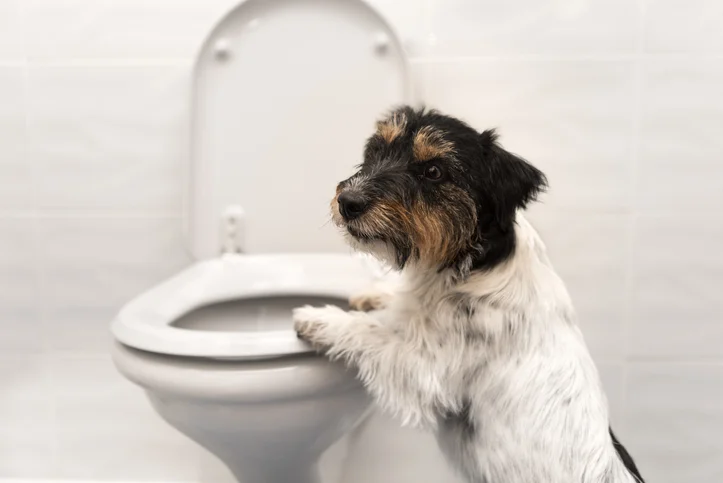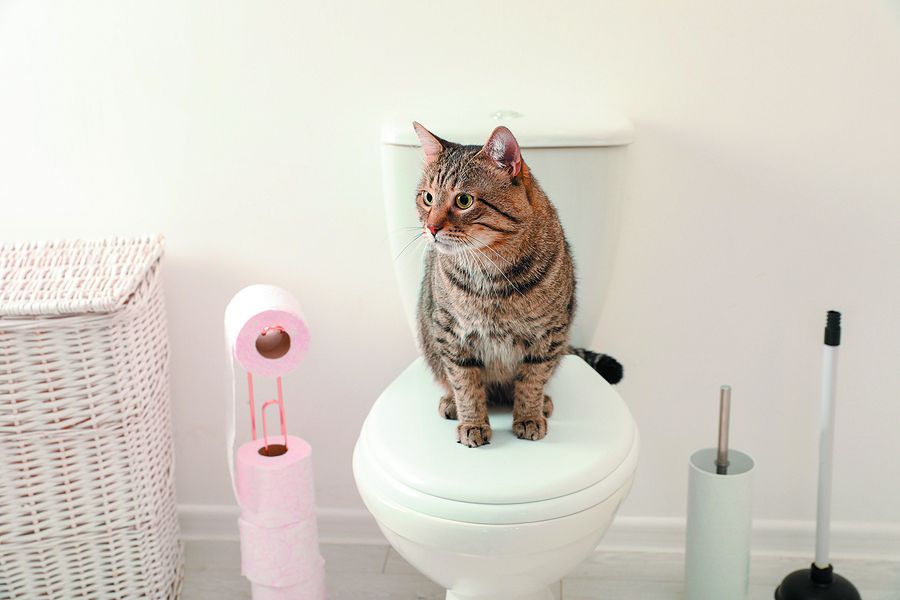Exploring the Risks of Flushing Animal Waste Down the Toilet
Exploring the Risks of Flushing Animal Waste Down the Toilet
Blog Article
Every person maintains their own unique ideas about Should you flush animal waste down the toilet.

When it pertains to taking care of waste, specifically animal waste, many individuals often resort to the convenient choice of flushing it down the commode. Nevertheless, this apparently easy option can have major consequences for the setting and public health. In this short article, we'll check out why flushing animal waste down the bathroom is a bad idea and offer alternate methods for correct disposal.
Introduction
Proper waste disposal is critical for maintaining ecological sustainability and public health. While it might appear safe to purge animal waste down the bathroom, it can cause numerous problems, both for the atmosphere and human well-being.
Threats of flushing pet waste
Environmental influence
Purging pet waste introduces damaging germs and microorganisms into rivers, which can adversely impact marine communities. These microorganisms can infect water sources and injury marine life, interfering with delicate environments.
Public health concerns
Pet waste has unsafe germs such as E. coli and Salmonella, which can posture severe health risks to humans. Flushing animal waste down the toilet can pollute water products, leading to the spread of conditions and infections.
Alternatives to flushing
Rather than flushing pet waste down the toilet, there are numerous different disposal approaches that are extra environmentally friendly and hygienic.
Composting
Composting pet waste is an eco-friendly way to deal with it. By composting, raw material is broken down right into nutrient-rich dirt, which can be utilized to feed yards and plants.
Garbage dump disposal
Throwing away animal waste in a garbage dump is an additional option. While not as environmentally friendly as composting, it is a much safer option to flushing, as it prevents the contamination of water sources.
Pet waste disposal systems
There are specific pet garbage disposal systems offered that securely and hygienically dispose of pet waste. These systems usually make use of enzymes to break down waste and get rid of smells.
Steps to proper animal garbage disposal
To make sure proper disposal of pet waste, adhere to these steps:
Scooping and landing waste
Regularly scoop and bag pet waste using naturally degradable bags. This prevents waste from contaminating the setting.
Utilizing assigned waste bins
Dispose of bagged pet waste in marked waste containers, such as compost containers or land fill containers. Stay clear of flushing it down the bathroom in all costs.
Cleansing can and pet dog areas routinely
On a regular basis clean can and family pet locations to avoid the buildup of waste and bacteria. Usage pet-safe cleaning products to keep hygiene.
Benefits of correct disposal techniques
Taking on appropriate disposal approaches for pet waste provides numerous advantages:
Minimized environmental pollution
Proper disposal methods minimize the threat of environmental pollution, shielding waterways and environments from contamination
Lessened risk of water contamination.
By avoiding flushing animal waste down the toilet, the threat of water contamination is considerably decreased, guarding public health.
Boosted hygiene and health
Proper disposal methods promote better cleanliness and hygiene, creating a safer environment for both humans and animals.
Conclusion
To conclude, flushing pet waste down the commode is damaging to the environment and public health. By taking on alternate disposal approaches and complying with appropriate waste monitoring techniques, we can minimize the negative impact of pet waste and add to a cleaner, healthier earth.
What To Do With Dog Poo – The Do's And Don'ts Of Disposing Of Faeces
Dog poo bins
Some councils provide dedicated dog waste bins in popular dog-walking areas that can take dog poo that has been bagged but you can legally dispose of dog waste in any public litter bin, as long as it is securely bagged. This also applies to your wheelie bin at home.
Do not flush
Water companies do not recommend flushing dog faeces down the toilet because certain parasites can survive the water processing treatment and are potentially harmful to humans. You should also never consider flushing dog poo that has been bagged down the toilet as the bags will not break down and instead create severe blockages in the sewage system.
In the woods
The Forestry Commission promotes a ‘stick and flick’ method for dealing with waste in the woods. This means finding a stick and using it to flick any poo from off the path so that it is out of the way of other walkers. You could also bury it as long as it is not in an area where there might be livestock.
Livestock
Parasites found in dog poo can be transmitted to livestock if they inadvertently eat infected faeces that has been left on grazing land. This could result in the death of sheep or abortion in cattle so you should always make sure you pick up your dog’s waste in fields where livestock could be present.

On a regular basis clean can and family pet locations to avoid the buildup of waste and bacteria. Usage pet-safe cleaning products to keep hygiene.
Benefits of correct disposal techniques
Taking on appropriate disposal approaches for pet waste provides numerous advantages:
Minimized environmental pollution
Proper disposal methods minimize the threat of environmental pollution, shielding waterways and environments from contamination
Lessened risk of water contamination.
By avoiding flushing animal waste down the toilet, the threat of water contamination is considerably decreased, guarding public health.
Boosted hygiene and health
Proper disposal methods promote better cleanliness and hygiene, creating a safer environment for both humans and animals.
Conclusion
To conclude, flushing pet waste down the commode is damaging to the environment and public health. By taking on alternate disposal approaches and complying with appropriate waste monitoring techniques, we can minimize the negative impact of pet waste and add to a cleaner, healthier earth.
What To Do With Dog Poo – The Do's And Don'ts Of Disposing Of Faeces
Dog poo bins
Some councils provide dedicated dog waste bins in popular dog-walking areas that can take dog poo that has been bagged but you can legally dispose of dog waste in any public litter bin, as long as it is securely bagged. This also applies to your wheelie bin at home.
Do not flush
Water companies do not recommend flushing dog faeces down the toilet because certain parasites can survive the water processing treatment and are potentially harmful to humans. You should also never consider flushing dog poo that has been bagged down the toilet as the bags will not break down and instead create severe blockages in the sewage system.
In the woods
The Forestry Commission promotes a ‘stick and flick’ method for dealing with waste in the woods. This means finding a stick and using it to flick any poo from off the path so that it is out of the way of other walkers. You could also bury it as long as it is not in an area where there might be livestock.
Livestock
Parasites found in dog poo can be transmitted to livestock if they inadvertently eat infected faeces that has been left on grazing land. This could result in the death of sheep or abortion in cattle so you should always make sure you pick up your dog’s waste in fields where livestock could be present.

As a passionate person who reads on , I imagined sharing that segment was essential. So long as you enjoyed reading our blog entry plz be sure to pass it around. Thank-you for taking the time to read it.
Click Here Report this page